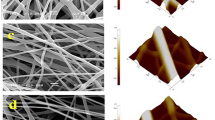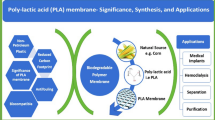Abstract
The cell plasma membrane suffers structural disruptions from both daily environmental stresses and trauma. Rapid loss of cell viability occurs if membrane integrity is not rapidly restored. Physiological membrane sealing involves alteration of local intermolecular thermodynamics that is manifested by changes in membrane tension which precede reassembly of the membrane planar bilayer structure. Certain block copolymer surfactants, including poloxamer 188 (P188), have been proven to seal-disrupted cell membranes. However, the specific molecular mechanics of poloxamer-mediated membrane sealing remains a target of investigation. A decrease in membrane tension precedes membrane sealing by natural intrinsic cell sealing processes. The effect of P188 on the quasistatic membrane tension of Madin-Darby canine kidney (MDCK) and Swiss 3T3 fibroblasts cells under normal and saponin-permeabilized conditions was measured using laser optical tweezer (LOT)-extracted membrane tethers. The tether trap length of saponin-permeabilized MDCK cell membranes decreased from an uninjured control of 11.28 ± 1.1 μm to 6.43 ± 0.67 μm. Treatment with P188 (0.2 mM) significantly increased the tether trap length to 9.69 ± 1.0 μm (p < 0.05) while the control polymer, polyethylene glycol (0.2 mM) resulted in tether trap length of 7.02 ± 0.73 μm that was not significantly different. Similar observations were made in the saponin-permeabilized fibroblasts. Corresponding fluorescence cell viability assays revealed that P188-treated cells had a higher survival rate. Thus, surfactant copolymer membrane sealing restores the membrane integrity by decreasing the membrane tension.
Lay Summary
Cells quickly become non-viable when plasma membrane integrity is lost. Restoring or healing the cell membrane requires alteration in the forces that stabilize the membrane structure. The membrane defect healing processes are preceded by a decrease in membrane interfacial tension. This study demonstrated that amphiphilic block copolymer surfactants, such as poloxamer 188 (P188), reduce membrane tension and promote cell survival. Using laser optical tweezers, this work quantified the effect of surfactant copolymer-catalyzed sealing. Our work utilized laser optical tweezers to demonstrate that copolymer-catalyzed membrane sealing corresponds with a decrease in membrane tension, much like the physiologic response to membrane injury.







Similar content being viewed by others
References
Baskaran H, Toner M, Yarmush ML, Berthiaume F. Poloxamer-188 improves capillary blood flow and tissue viability in a cutaneous burn wound. J Surg Res. 2001;101:56–61.
Chen HF, McFaul C, Tutushkin I, Cho M, Lee RC. Surfactant copolymer annealing of chemically permeabilized cell membranes. Regen Eng Transl Med. 2018.
Cheng C-Y, Wang J-Y, Kausik R, Lee KYC, Han S. An ultrasensitive tool exploiting hydration dynamics to decipher weak lipid membrane–polymer interactions. J Magn Reson. 2012;215:115–9.
Cheng C-Y, Wang J-Y, Kausik R, Lee KYC, Han S. Nature of interactions between PEO-PPO-PEO triblock copolymers and lipid membranes: (II) role of hydration dynamics revealed by dynamic nuclear polarization. Biomacromolecules. 2012;13:2624–33.
Collins J, Despa F, Lee R. Structural and functional recovery of electropermeabilized skeletal muscle in-vivo after treatment with surfactant poloxamer 188. Biochim Biophys Acta Biomembr. 2007;1768:1238–46.
Dai J, Sheetz MP. Cell membrane mechanics. Methods Cell Biol. 1997;55:157–71.
Dai J, Sheetz MP, Wan X, Morris CE. Membrane tension in swelling and shrinking molluscan neurons. J Neurosci. 1998;18:6681–92.
Diz-Muñoz A, Fletcher DA, Weiner OD. Use the force: membrane tension as an organizer of cell shape and motility. Trends Cell Biol. 2013;23:47–53.
Fällman E, Schedin S, Jass J, Andersson M, Uhlin BE, Axner O. Optical tweezers based force measurement system for quantitating binding interactions: system design and application for the study of bacterial adhesion. Biosens Bioelectron. 2004;19:1429–37.
Firestone MA, Seifert S. Interaction of nonionic PEO−PPO diblock copolymers with lipid bilayers. Biomacromolecules. 2005;6:2678–87.
Frey SL, Zhang D, Carignano MA, Szleifer I, Lee KYC. Effects of block copolymer’s architecture on its association with lipid membranes: experiments and simulations. J Chem Phys. 2007;127:114904.
Greenebaum B, Blossfield K, Hannig J, Carrillo CS, Beckett MA, Weichselbaum RR, et al. Poloxamer 188 prevents acute necrosis of adult skeletal muscle cells following high-dose irradiation. Burns. 2004;30:539–47.
Hannig J, Zhang D, Canaday DJ, Beckett MA, Astumian RD, Weichselbaum RR, et al. Surfactant sealing of membranes permeabilized by ionizing radiation. Radiat Res. 2000;154:171–7.
Hochmuth FM, Shao J-Y, Dai J, Sheetz MP. Deformation and flow of membrane into tethers extracted from neuronal growth cones. Biophys J. 1996;70:358–69.
Lee RC, River LP, Pan F, Ji L, Wollmann RL. Surfactant-induced sealing of electropermeabilized skeletal muscle membranes in vivo. Proc Natl Acad Sci. 1992;89:4524–8.
Li Z, Anvari B, Takashima M, Brecht P, Torres JH, Brownell WE. Membrane tether formation from outer hair cells with optical tweezers. Biophys J. 2002;82:1386–95.
Marks JD, Pan C-Y, Bushell T, Cromie W, Lee RC. Amphiphilic, tri-block copolymers provide potent membrane-targeted neuroprotection. FASEB J. 2001;15:1107–9.
Maskarinec SA, Hannig J, Lee RC, Lee KYC. Direct observation of poloxamer 188 insertion into lipid monolayers. Biophys J. 2002;82:1453–9.
Matthews KL II, Aarsvold JN, Mintzer RA, Chen C-T, Lee RC. Tc-99m pyrophosphate imaging of poloxamer-treated electroporated skeletal muscle in an in vivo rat model. Burns. 2006;32:755–64.
Merchant FA, Holmes WH, Capelli-Schellpfeffer M, Lee RC, Toner M. Poloxamer 188 enhances functional recovery of lethally heat-shocked fibroblasts. J Surg Res. 1998;74:131–40.
Miyake K, McNeil PL. Mechanical injury and repair of cells. Crit Care Med. 2003;31:S496–501.
Padanilam JT, Bischof JC, Lee RC, Cravalho EG, Tompkins RG, Yarmush ML, et al. Effectiveness of poloxamer 188 in arresting calcein leakage from thermally damaged isolated skeletal muscle cellsa. Ann N Y Acad Sci. 1994;720:111–23.
Raucher D, Sheetz MP. Characteristics of a membrane reservoir buffering membrane tension. Biophys J. 1999;77:1992–2002.
Shelat PB, Plant LD, Wang JC, Lee E, Marks JD. The membrane-active tri-block copolymer pluronic F-68 profoundly rescues rat hippocampal neurons from oxygen–glucose deprivation-induced death through early inhibition of apoptosis. J Neurosci. 2013;33:12287–99.
Shilagardi K, Li S, Luo F, Marikar F, Duan R, Jin P, et al. Actin-propelled invasive membrane protrusions promote fusogenic protein engagement during cell-cell fusion. Science. 2013;340:359–63.
Titushkin I, Cho M. Distinct membrane mechanical properties of human mesenchymal stem cells determined using laser optical tweezers. Biophys J. 2006;90:2582–91.
Titushkin I, Cho M. Modulation of cellular mechanics during osteogenic differentiation of human mesenchymal stem cells. Biophys J. 2007;93:3693.
Togo T. Long-term potentiation of wound-induced exocytosis and plasma membrane repair is dependant on cAMP-response element-mediated transcription via a protein kinase C- and p38 MAPK-dependent pathway. J Biol Chem. 2004;279:44996–5003.
Togo T, Krasieva TB, Steinhardt RA. A decrease in membrane tension precedes successful cell-membrane repair. Mol Biol Cell. 2000;11:4339–46.
Tsai MA, Frank RS, Waugh RE. Passive mechanical behavior of human neutrophils: effect of cytochalasin B. Biophys J. 1994;66:2166–72.
Wang J-Y, Marks J, Lee KYC. Nature of interactions between PEO-PPO-PEO triblock copolymers and lipid membranes: effect of polymer hydrophobicity on its ability to protect liposomes from peroxidation. Biomacromolecules. 2012;13:2616–23.
Wu G, Majewski J, Ege C, Kjaer K, Weygand M, Lee KYC. Interaction between lipid monolayers and poloxamer 188: an X-ray reflectivity and diffraction Study. Biophys J. 2005;89:3159–73.
Acknowledgements
We would like to thank Julianna Oliveira and Hongfeng Chen, PhD, for conducting some experiments.
Funding
This work was financially supported by a National Institutes of Health grant GM RO1 64757 (RCL), National Institute of General Medical Sciences through the T32 Training Grant GM099697 (RCL) and an Office of Naval Research grant N00014-06-1-0100 (MC).
Author information
Authors and Affiliations
Corresponding author
Additional information
Publisher’s Note
Springer Nature remains neutral with regard to jurisdictional claims in published maps and institutional affiliations.
Rights and permissions
About this article
Cite this article
Maatouk, C., Ling, M., Titushkin, I. et al. Amphiphilic Block Copolymer-Catalyzed Cell Membrane Sealing Is Linked to Decreased Membrane Tension. Regen. Eng. Transl. Med. 8, 134–144 (2022). https://doi.org/10.1007/s40883-021-00206-1
Received:
Revised:
Accepted:
Published:
Issue Date:
DOI: https://doi.org/10.1007/s40883-021-00206-1




